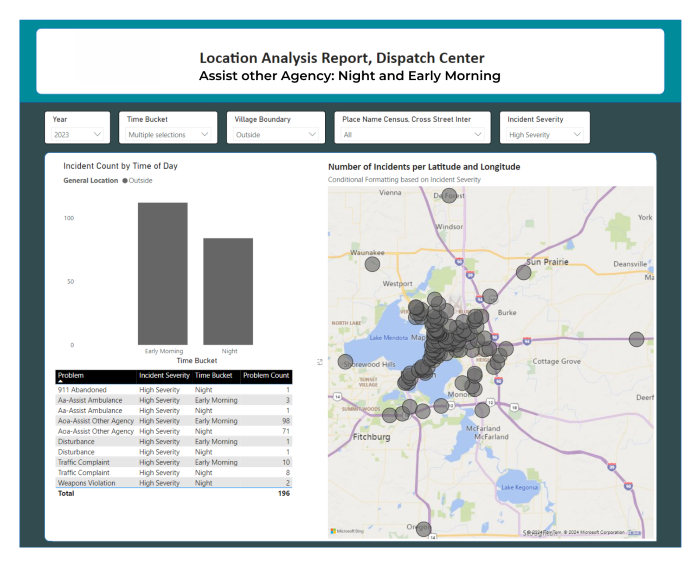Data, turned into information and insight is a powerful tool. It can highlight an unknown root cause, identify patterns of activity, and expose gaps. It should be understandable to all; it can remove fear, uncertainty, and doubt – it can bring people to a common ground.
“The single biggest threat to the credibility of a presentation is cherry-picked data.” – Edward Tufte
Before presenting – one must understand the why behind the changes in data. The jump in calls for service was not due to a rampant crime spree – after just a little digging the increase in calls reflected a change in late 2022 to how the police department recorded its work. They started to include a proactive service of checking property, changing the definition of the underlying data. This could have been addressed with strong data governance.
Be sure that you are not building a house of cards. The knock-on assumed correlations were now on shaky ground. Further analysis showed multiple arrests were in other jurisdictions, had multiple arrests per interaction and were focused on one activity “traffic-stops”. Many of these occurred outside the community in question.
Jumping around units of measure and groupings adds to confusion. Using plain language is also important - “calls for service” sounds like someone dialing 911 and asking for help and does not indicate the police themselves creating these incidents. The original article quoted 3,163 “calls for service”, that number sounds substantial or broken down you could look at it another way as 8 calls per day or approximately 1 incident every 3 hours.
The right visual for the right information. Tables are easy, but getting information in a context that people understand and relate to is vital when sharing a story.

Being able to drill into information and answer new questions quickly was great. People could ask and answer their own questions. It became less about how the math was done and more about what the information was saying.
Policing is a difficult job – there is no doubt about that. Also difficult is balancing budgets, ensuring public trust, and allocating scare resources. An accurate data picture can support municipalities in understanding where resources are allocated and how their workload is broken down. It can also build community trust.
By: Patrick Grant, Director of Public Sector Sales

























.png)
.png)

.png)











.png)















